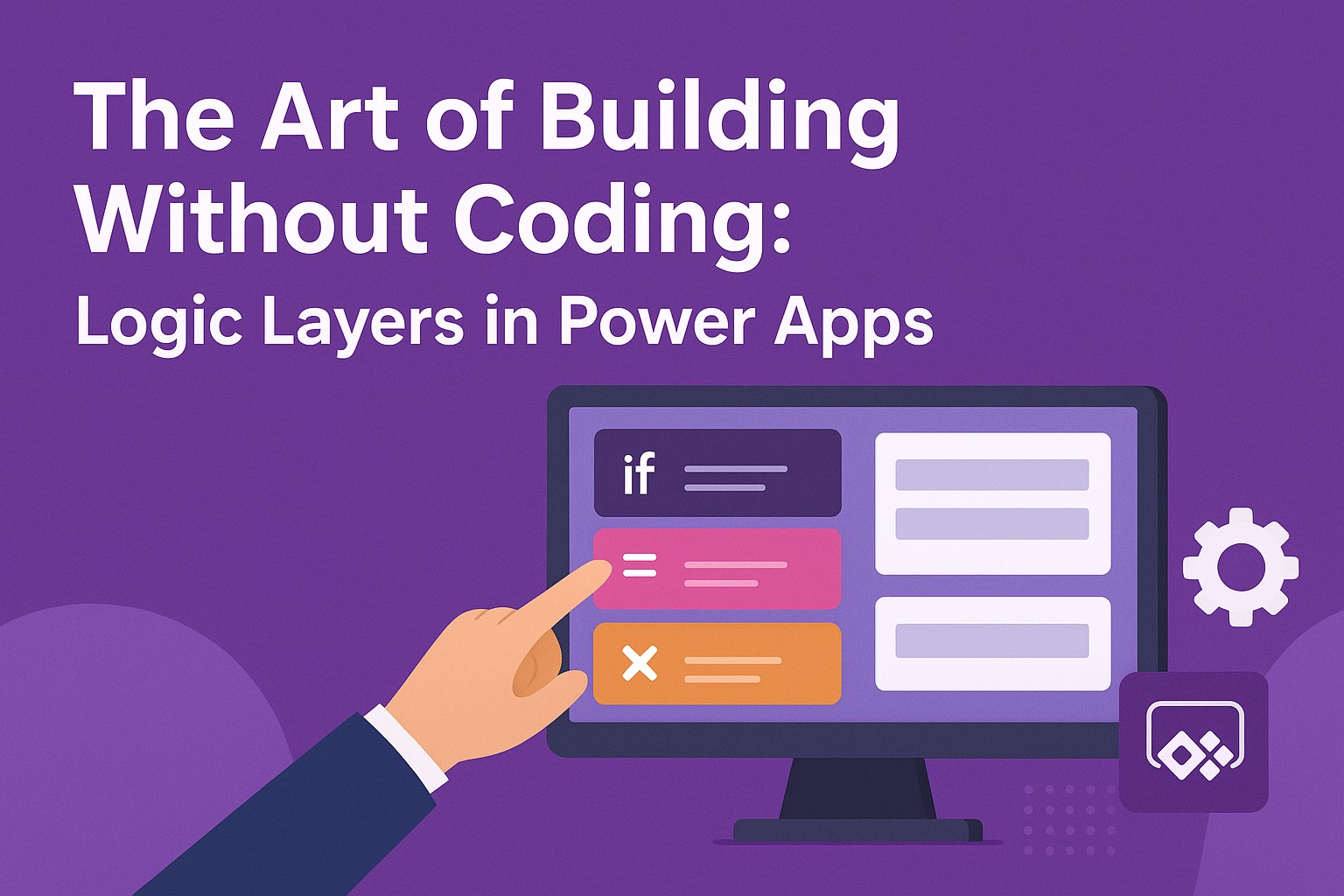Power Apps is one of the most advanced tools in the Microsoft Power Platform ecosystem that allows users to build business applications without traditional programming. The platform depends on structured logic layers that control how data moves, how users interact, and how automated actions are executed. To understand more about it, a Microsoft Power Platform Training will help you get a deep knowledge.Let us start understanding the architecture of Power Apps logic layers in detail.
The Architecture of Power Apps Logic Layers
The technical design of Power Apps is built on a logic architecture that connects user controls, data systems, and automation. Each logic layer performs a defined function that supports the complete app workflow.
Component Logic Layer (UI Layer)
This layer focuses on how the user interface reacts. Power Apps use Excel-style formulas that control visibility, behavior, and data interaction of buttons, forms, and other components. When a user performs an action, the formula within that component defines what happens next, maintaining complete functional control without needing manual coding.
Data and Context Logic Layer
This layer manages data communication between Power Apps and connected services. It uses connectors to link data from platforms such as SharePoint, Dataverse, or SQL. Context variables store temporary data within the app, ensuring that each action and data value is updated and processed in real time. The logic system ensures accurate data transfer and avoids data conflicts.
Process Automation Layer
This layer handles automation beyond the interface. It connects with Power Automate to define sequences like notifications, record updates, or approval processes. Each flow is triggered based on a defined logic condition, allowing complex automation to run without traditional coding.
Dependency and Data Flow Management
Power Apps uses a reactive data model that continuously recalculates dependent formulas when any value changes. This removes the need for manual refresh logic. The dependency structure ensures that every formula, variable, and data source maintains synchronization across the app.
The main components of dependency management include:
- Formula Dependencies: Tracks how formulas depend on variables and data sources, recalculating when changes occur.
- Delegation Rules: Optimizes performance by executing large data queries on the source instead of processing them locally.
- Error Propagation: Detects formula errors in real time to maintain stability and data accuracy.
Logic Optimization in App Design
Efficient Power Apps design depends on how well logic layers are managed. Each formula and variable impacts performance, and unoptimized logic can slow the application. Developers follow specific technical practices to maintain system efficiency.
- Controlled Variable Use: Limit global and context variables to reduce unnecessary memory load.
- Delegation Awareness: Always confirm that data functions like Filter or Search are delegated to external sources for handling large datasets.
- Modular Logic Design: Avoid deeply nested formulas.
- Performance Monitoring: Use Power Apps Monitor to trace formula execution and identify any performance bottlenecks.
Students opting for Microsoft Power Platform Training Course in Delhior any other city will upgrade their skills in 2026 and be industry ready.
Logic Management and Data Governance
The logic layers in Power Apps also play a role in enforcing data governance. Each connection, formula, and automation process interacts with organizational data policies. When integrated with Dataverse, these logic rules align with business rules, validation logic, and field-level security.
Comparative Logic View
| Technical Aspect | Traditional Coding | Power Apps Logic Layers |
| Logic Definition | Based on syntax and code structure | Based on declarative and behavioral formulas |
| Event Handling | Managed with explicit event scripts | Controlled using property-based triggers |
| Data Synchronization | Requires manual data handling | Automatically recalculates through reactive logic |
| Automation Integration | Built with external scripts | Linked directly via Power Automate |
| Debugging | Uses IDE-based error tracing | In-app formula validation and dependency tracking |
This comparison shows that Power Apps maintains the technical capabilities of coded applications but implements them through a structured, visual, and formula-based environment that removes manual syntax management.
Internal Formula Processing
Inside Power Apps, every formula passes through an internal interpreter that determines dependencies, execution order, and updates. This interpreter continuously evaluates whether data or variables have changed and updates related values. It works like a real-time calculation engine that automatically recalculates outputs based on formula dependencies.
This layer of internal processing ensures consistent app performance even when multiple users or data connections are active. It also helps maintain transactional accuracy during simultaneous operations, which is critical for business environments that depend on data reliability.
Technical Role of Logic in Scalability
Logic layers in Power Apps are not just about creating functionality. They define how the app scales. Because logic is centralized in formulas and connectors rather than hardcoded modules, Power Apps can easily expand with new data sources or users.
Key Takeaways
- The reactive model ensures automatic recalculation and real-time synchronization.
- Proper optimization of variables, delegation, and modular design improves performance.
- Integration with Dataverse enables logic-driven data governance and compliance.
- Localized enterprise regions like Gurgaon and Delhi are adopting Power Apps logic frameworks to strengthen low-code automation practices through specialized training programs.
Sum up,
Power Apps demonstrates that logic can exist without traditional code. The platform’s layered logic structure ensures automation, data control, and interaction precision while maintaining enterprise scalability.
Understanding these technical layers allows professionals to design efficient, secure, and responsive systems. Now, if you are opting for Microsoft Power Platform Training Course in Gurgaonor any other city you will become industry relevant in 2026.
